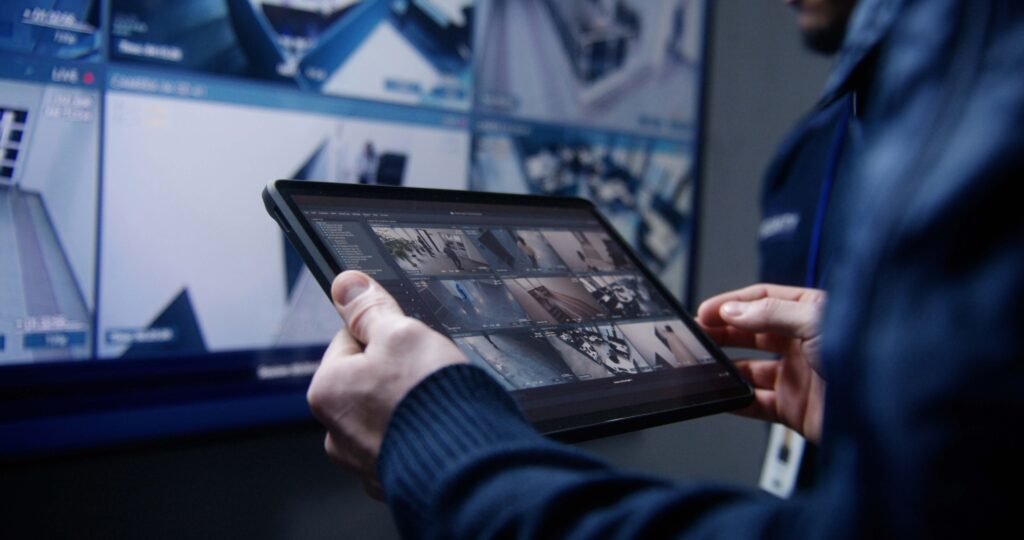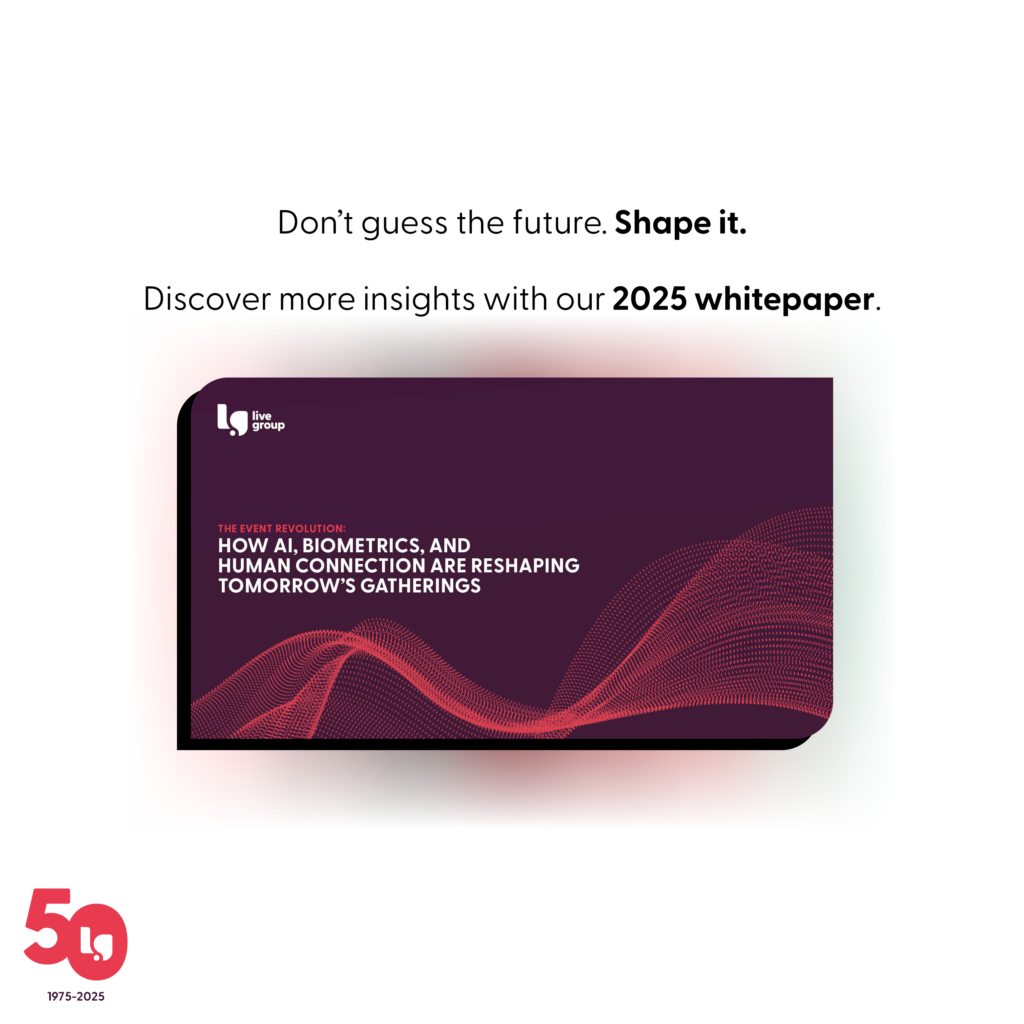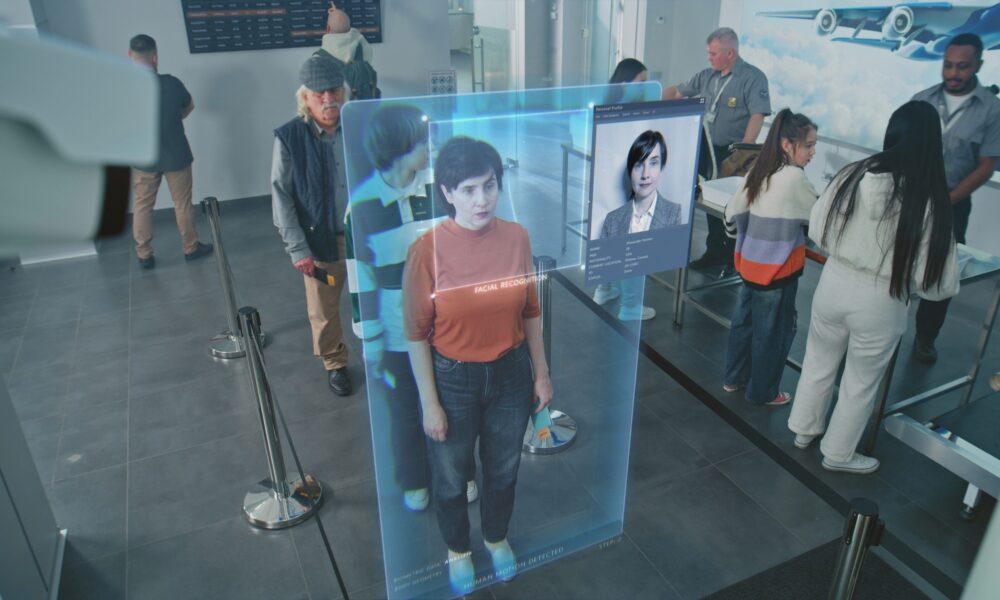AI in event security isn’t a gimmick, it signals a fundamental shift in the way events are run.
When 300,000 people streamed through the Tokyo Olympics venues in 2021, something remarkable happened: facial recognition systems verified every single person in seconds, security robots patrolled corridors without breaks, and AI algorithms managed crowd flows in real time. This wasn’t science fiction; it was the new reality of AI in event management.
From London’s O2 Arena to India’s Maha Kumbh Mela, artificial intelligence is fundamentally changing how we secure and operate major events. The technology that seemed futuristic just years ago is now preventing stampedes, catching security threats, and ensuring your next conference runs like clockwork.
What is Replacing Traditional Event Security?
Traditional event security is often more theatre than substance: long queues, manual badge checks, and overwhelmed staff watching too many screens. AI event technology is replacing this with genuine protection that actually works.
Consider the numbers. Facial recognition can now verify identities in under two seconds with 99.9% accuracy, while human security staff average 15 to 30 seconds per manual check. At the Brit Awards, this meant processing thousands of guests without the usual bottlenecks. At the Tokyo Olympics, it meant securing venues without creating the very crowds that pose security risks.
But the real breakthrough isn’t speed; it’s intelligence. AI surveillance systems at the Paris 2024 Olympics can detect an abandoned bag, identify weapon shapes, spot unusual crowd movements, and even recognise early signs of fire, all simultaneously across hundreds of camera feeds. When London’s Metropolitan Police piloted these systems at Notting Hill Carnival, they identified wanted individuals in crowds of thousands, preventing incidents before they occurred.
The most striking aspect? These systems never lose concentration. While human operators suffer fatigue after just 20 minutes of screen monitoring, AI maintains perfect vigilance indefinitely. Security teams report that AI catches subtle anomalies humans routinely miss: a person moving against crowd flow, someone loitering near restricted areas, or bags left in blind spots.
Key Takeaways:
- AI speeds up your event security checks, avoiding the frustration of lengthy queues and freeing up more time to engage
- Smart systems detect risks like abandoned bags or unusual movements.
- AI doesn’t suffer from fatigue, maintaining vigilance throughout the event
From Reactive to Predictive Security: How Does AI Anticipate Problems?
The game-changer is AI’s ability to predict problems before they happen. By analysing historical data, social media chatter, weather patterns, and ticket sales, AI can forecast which events might face protests, where crowds will surge, and when security risks peak.
One European security firm’s AI correctly predicted protest activity at 87% of flagged events by analysing online sentiment and historical patterns. Event organisers now receive risk assessments that would have taken human analysts weeks to compile, delivered in minutes with actionable recommendations.
This predictive power extends to the venue itself. AI simulations can model thousands of “what if” scenarios: What happens if rain forces 10,000 people indoors simultaneously? Where will bottlenecks form if an exit is blocked? These simulations, impossible to run with human planning alone, have prevented numerous crowd crush incidents.
Key Takeaways:
- AI can predict threats before they occur using data and simulations.
- Risk assessments are delivered in minutes instead of weeks.
- Prevents crowd crushes and improves proactive security planning.
How is AI Transforming Event Logistics?
Behind every smooth event lies a logistics nightmare: scheduling thousands of tasks, coordinating hundreds of staff, managing supplies, and adapting to constant changes. AI event platforms are turning this chaos into clockwork precision.
Northwestern Mutual’s conference programme showcases the impact. Their AI scheduling system eliminated overtime completely whilst reducing required staff numbers. Tasks that consumed hours of double-checking now update instantly. The system learns from each event, becoming more accurate at predicting staffing needs and resource allocation.
The real magic happens in prediction. At San Francisco’s Data + AI Summit, organisers used AI to analyse previous years’ attendance patterns and pre-event social media activity. The system correctly predicted which sessions would overflow, allowing room changes that prevented the usual scramble for seats. Accuracy improved from 60% (human estimates) to 94% (AI predictions).
Paris takes this further. Their metro system’s AI analyses upcoming events, weather, and historical patterns to deploy extra trains before congestion hits. During Paris Fashion Week 2024, this cut average waiting times by 30%. The system even sends alerts to commuters’ phones, suggesting alternative routes to prevent platform overcrowding.
Key Takeaways:
- AI automates and optimises event scheduling and staffing.
- Predictive systems prevent session overcrowding.
- Public transport AI cuts congestion around major events.

How Does AI Improve Crowd Management at Events? Crowd Science in Action
Managing large crowds used to be guesswork mixed with experience. Now it’s becoming a precise science. AI crowd management systems create real-time “heat maps” of crowd density using cameras, sensors, and even anonymised mobile phone signals. But they don’t just observe; they predict and prevent.
At India’s Maha Kumbh Mela, where millions gather, AI monitored crowd density across the entire site. When any area approached dangerous levels, the system triggered interventions: opening additional exits, dispatching staff, or sending messages redirecting attendees to less crowded areas. Despite hosting one of the world’s largest gatherings, major incidents were prevented entirely.
Berlin’s metro achieved a 20% reduction in peak congestion through AI that not only predicts crowding but actively shapes it. The system shares predictions with commuters, who adjust their travel times accordingly. It’s crowd control through information rather than barriers.
Digital twin technology takes this further. These AI systems create virtual replicas of venues, continuously modelling crowd behaviour. Operators can test interventions in the simulation before applying them in reality. One major venue reported reducing evacuation times by 40% after optimising exit strategies through digital twin modelling.
Key Takeaways:
- AI monitors and prevents dangerous crowd density.
- Digital twins simulate venue evacuations for safety improvements.
- Predictive data reduces congestion without heavy barriers.
What Role Do Robots Play in AI Events?
Science fiction becomes reality as autonomous systems become part of AI event security and logistics. Japan’s Secom Robot X2 patrols venues with 360-degree vision, thermal imaging, and metal detection. It checks bins for suspicious items, identifies overheating equipment, and never needs a coffee break. The REBORG-Z goes further, doubling as an information kiosk that speaks multiple languages while maintaining security surveillance.
These aren’t gimmicks. Autonomous systems handle tasks humans find tedious or dangerous: overnight patrols, perimeter monitoring in bad weather, or checking hazardous areas. They’re particularly valuable in large venues where human security would need dozens of staff to achieve the same coverage.
Logistics robots are emerging too. Convention centres test self-driving carts that ferry equipment through corridors, while outdoor festivals explore drone delivery for medical supplies. The broader logistics industry sees 25% to 70% productivity gains from robotics, suggesting events could achieve similar improvements.
Key Takeaways:
- Security robots perform surveillance and patrol tasks.
- Robots reduce staff requirements for routine or risky jobs.
- Logistics robots improve efficiency with autonomous deliveries.
How Do AI Models Handle Data Privacy and Security
Europe leads in demonstrating that effective AI event security doesn’t require invasive surveillance. France’s Olympic security system deliberately excludes facial recognition and personal tracking, focusing purely on behavioural patterns. It can identify threats without identifying people.
This “privacy-preserving AI” may become the global standard. The EU’s Artificial Intelligence Act, coming into force by 2025, will require strict oversight of biometric systems at events. Rather than hindering innovation, these regulations are spurring development of AI that’s both effective and ethical.
The message is clear: AI can enhance security and efficiency without becoming Big Brother. Transparent policies, clear consent processes, and human oversight ensure technology serves attendees rather than surveilling them.
Key Takeaways:
- AI can spot risks without storing personal identities.
- Strict regulations are shaping ethical AI event solutions.
- Transparent policies keep attendees protected, not surveilled.
What Does AI Mean for the Future of Events?
For event professionals, the implications are profound. AI in events isn’t replacing human judgement; it’s amplifying human capabilities. Security teams can focus on response rather than detection. Planners can test scenarios rather than guess outcomes. Operations managers can prevent problems rather than react to them.
The early adopters are already seeing results: reduced security incidents, lower operational costs, higher attendee satisfaction, and fewer stressed staff. One event director summarised it perfectly: “AI handles the heavy lifting so we can focus on the human touches that make events special.”
The competitive advantage is real. Events using AI report 30% to 40% reductions in security response times, 20% to 30% improvements in crowd flow, and significant cost savings through optimised staffing. As attendee expectations rise and margins tighten, these advantages become necessities.
Key Takeaways:
- AI improves event safety, cost-efficiency, and attendee experience.
- Early adopters gain significant competitive advantages.
- AI frees humans to focus on the “human touches” at events.
How is AI Shaping the Future of Event Security and Logistics?
We’re witnessing the early stages of a fundamental transformation. Today’s AI identifies threats and manages crowds. Tomorrow’s will coordinate entire events autonomously, with multiple AI agents handling everything from security to logistics in perfect synchronisation.
The technology exists. The benefits are proven. The only question is how quickly the industry will adopt it. Leading venues in Asia and Europe aren’t waiting; they’re implementing AI systems that would have seemed impossible five years ago.
For event professionals, the message is straightforward: AI isn’t coming to the events industry; it’s already here. The choice isn’t whether to adopt it, but how quickly you can harness its power to deliver safer, smoother, more successful events. Because while your attendees may never see the AI working behind the scenes, they’ll certainly notice if your competitors are using it and you’re not.
Key Takeaways:
- AI will soon coordinate entire events autonomously.
- Early adoption secures long-term competitive advantage.
- The industry shift towards AI in event security is quick and unavoidable.
AI in events refers to the use of artificial intelligence to improve event security, logistics, crowd management, scheduling, and attendee experience. It includes technologies like facial recognition, predictive analytics, autonomous robots, and digital twins that make events safer and more efficient.
AI is transforming event security and logistics by predicting risks before they happen, automating routine tasks, and analysing crowd flows in real time. From detecting abandoned bags to forecasting session attendance, AI helps organisers prevent problems rather than react to them.
Examples of AI in events include: Facial recognition at the Tokyo Olympics to speed up entry. AI scheduling at Northwestern Mutual’s conference to cut overtime. Crowd monitoring at India’s Maha Kumbh Mela to prevent overcrowding. Paris Metro’s AI system adjusting train frequency for Fashion Week.
AI crowd management systems create real-time heat maps of attendee density, predict congestion, and trigger interventions such as opening exits or redirecting flows. Digital twin technology allows organisers to simulate and test evacuation strategies before the event begins.
Robots in AI event security can patrol venues, detect threats, and act as information kiosks. In logistics, autonomous carts and drones are being tested to transport equipment and medical supplies, reducing workload for human staff.
Yes. Modern AI event technology can be privacy-preserving. For example, France’s Olympic system avoided facial recognition and focused only on behaviour patterns. The EU’s AI Act will enforce strict oversight to ensure AI is both effective and ethical.
Event organisers using AI in events report: 30–40% faster security response times /20–30% improvements in crowd flow/Reduced operational costs/Higher attendee satisfaction
The future of AI events lies in full automation. Multiple AI agents will coordinate security, logistics, and attendee experiences seamlessly. Adoption is already happening in Asia and Europe, and experts believe the industry will soon treat AI as essential infrastructure.
Ready to take the stress out of event planning?
Chat to us today about how our delegate management services can help bring your next event to life – on time, on budget, and beyond expectations. Whether you need full-scale delivery or targeted support, Live Group is here to help.
Download our latest report to explore the latest event solutions, learn how event production agencies are leveraging technology for seamless conference planning, and uncover strategies to enhance hybrid event management.






